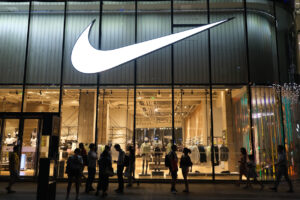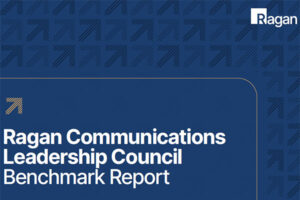How and why the ‘mixternal’ comms trend is accelerating
With COVID-19 and remote work putting the spotlight on employee experience, close collaboration between internal and external communications has become paramount.

Internal communications has never been more important for brand reputation and external positioning. How your organization treats employees, prioritizes internal efforts such as diversity, equity and inclusion, and creates a safe and secure place to work are all increasingly crucial in 2021.
That’s why the “mixternal” trend in communications—the blurring of the lines between internal and external messaging and responsibilities—has accelerated during the COVID-19 crisis. The trend was strong enough that Lippe Taylor, the public relations and digital marketing agency, decided to acquire an employee experience agency, Cheer Partners.
PR Daily spoke with Paul Dyer, Lippe Taylor Group CEO, and Cheer Partners Founder Cat Colella-Graham, about how communicators must work together to safeguard brand reputation in today’s volatile media landscape.

Paul Dyer
Suffice to say, the trend isn’t going away anytime soon.
Top of mind for brand leaders
“I have a lot of conversations with clients, leaders in the industry, and every year it feels like internal communications has been more and more top of mind in those conversations,” says Dyer. “But when everything shut down and moved to remote work, it’s completely changed the tenor of those discussions.” While internal communications has always been an important consideration for leaders, only amid the backdrop of COVID-19 did such concerns skyrocket to the top of everyone’s list of priorities.
“It completely flipped in 2020, where internal became the top thing that was always top of mind for them,” Dyer says.
For Cheer Partners, the work has focused on building employee advocacy and empowering those essential brand ambassadors who can sell your company culture inside and outside the workplace.
“Our clients are really concerned about creating employee ambassadors,” says Colella-Graham. “How do they help them through the change management arc when there’s change? How do we really help our team feel like they’re part of our overarching goals and purpose?”
Employee and customer experience
Perhaps at the heart of the “mixternal” movement is understanding how the employee and the customer experience, once different hemispheres of pursuit, are intrinsically linked for an organization.
That’s not to say that they are identical. “They do share a lot of similar levers and tenets,” Colella-Graham says, “but employees are very different from your typical customers and stakeholders.”

Cat Colella-Graham
And yet the impact of internal messages have become essential parts of the external brand.
Dyer gives the example of Spotify, and how external and internal communications can be inseparable for a company that truly puts employees first. Spotify CEO Daniel Ek led the company through an unusual IPO process when the company went public in 2018, and his communications to internal employees risked SEC concerns, Dyer says, because of how transparent the messages were to employees.
When Dyer asked Spotify’s CCO Dustee Jenkins about it, Jenkins conveyed that the transparency was integral to Spotify’s identity. “This is how we were built; it’s employees first,” Dyer recalls.
At the time, Dyer saw such positioning as extraordinary. “Most CEOs would never communicate as transparently with their staff as he did,” he says—but now that the power of the employee is increasingly undeniable, more and more organizations are putting an emphasis on internal comms.
“Every major company we work with is moving in this direction,’ says Dyer. “You have to tell your employees first; you have to treat your employees as well as you treat your shareholders or better.”
And even though employee-centric strategy might seem like an obvious choice, it’s a striking new trend for many organizations. “Most big companies, the CEO in particular, were focused on their shareholders and other external audiences like regulators,” Dyer explains. “And employees would often find things out on the internet. In the last couple of years, employees started to demand better.”
Employees should know 25% more than ‘the street’
Colella-Graham says that the rise in two-way communication, facilitated by new comms technology, has become an essential driver for business leaders. And the ability for employees to have their externally-facing platforms, on social media and online, has incentivized businesses to consider how to make employees brand advocates.
But to feel like they are on the inside, employees must believe they have access and information that the average person on the street does not.
“If you have to tell your employees first and fast, and if they’re really going to be brand advocates, they need to know at least 25% more than ‘the street’ in advance of [news] going out,” says Colella-Graham. “That is how you get them to get excited about the news—and also to test how the street will take it.”
If your message goes over like a ton of bricks with employees who are very familiar with your organization, that’s a sign that your external audience might also respond poorly. “If your employees don’t feel like they have enough information or they’re perplexed, or they’re questioning or challenging these decisions, you can actually start to sound that out a little bit before you go out to the street,” says Colella-Graham.
It’s a key opportunity to get feedback on a message or tactic’s authenticity before the news is sent around the world.
A trend beyond COVID
While COVID-19, remote work and the many challenges of 2020 have accelerated the rise of employee experience and the need for “mixternal” comms, the trend was already well under way before 2020. Those drivers, which will still exist in the aftermath of the COVID-19 crisis, will continue to drive change and should be considered by pros looking to chart a path forward.
“Employees were able to see themselves affecting real change in companies because they were banding together and using their voice even before the pandemic,” says Colella-Graham. “Several companies have had to make real changes in their approach to how they treat themselves, how they treat their customers, even where they do business.”
Colella-Graham traces the trend back even before the #MeToo movement, which was a turning point of sorts in the progression of the employee experience. It was when employees started to demand more from their workplace, to be included in the overall organization and treated as more than mere cogs, that led to many of the movements we now see in corporate America.
“Once corporations really understood this, they sought to pivot their communications in a meaningful way so that the employees have voice,” she says, as well as understand “what’s in it for them.” Company leaders now understand they must make the case to workers about why a job at Amazon, for instance, is more attractive to potential hires than a job at Microsoft. That doesn’t mean that employees get everything they want or run roughshod over their employers—but it means that top leaders must spare more than a passing thought for the workers who create their products and services.
”it doesn’t mean that organizations have to respond to every request with capitulation,” says Colella-Graham, “but they need to say, ‘We hear you—and here’s what we’re doing.’”








Good piece. The idea of aligning internal and external comms without subsuming IC into the PR juggernaut is not a new one, but it’s taken people a long time to get it. Some decent thinking and examples here.